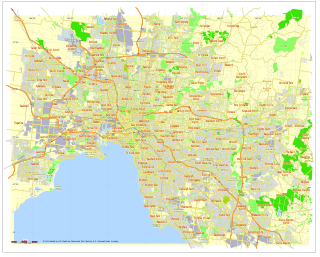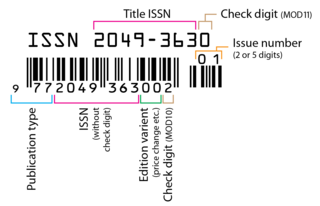
The Australian Army is Australia's military land force. It is part of the Australian Defence Force (ADF) along with the Royal Australian Navy and the Royal Australian Air Force. While the Chief of the Defence Force (CDF) commands the ADF, the Army is commanded by the Chief of Army (CA). The CA is therefore subordinate to the CDF, but is also directly responsible to the Minister for Defence. Although Australian soldiers have been involved in a number of minor and major conflicts throughout its history, only in World War II has Australian territory come under direct attack.

The Howard Government supported the disarmament of Iraq during the Iraq disarmament crisis. Australia later provided one of the four most substantial combat force contingents during the 2003 invasion of Iraq, under the operational codename Operation Falconer. Part of its contingent were among the first forces to enter Iraq after the official "execute" order. The initial Australian force consisted of three Royal Australian Navy ships, a 500-strong special forces task group, two AP-3C Orion maritime patrol aircraft, two B707 Air-to-Air refuelling aircraft, C-130 Hercules transport aircraft and No. 75 Squadron RAAF. Combat forces committed to Operation Falconer for the 2003 Invasion were withdrawn during 2003. Under the name Operation Catalyst, Australian combat troops were redeployed to Iraq in 2005, however, and assumed responsibility for supporting Iraqi security forces in one of Iraq's southern provinces. These troops began withdrawing from Iraq on 1 June 2008 and were completely withdrawn by 28 July 2009.

The Australian contribution to the war in Afghanistan has been known as Operation Slipper and Operation Highroad.
The Special Operations Command (SOCOMD) is a command within the Australian Defence Force. Special Operations Command was established on 5 May 2003 to unite all of the Australian Army Special forces units and by 2008 was fully operational. Australia's Special Operations Command is of equivalent status to Australia's Fleet, Forces and Air Commands. It is modelled on the equivalent commands in the United States and British militaries, and is led by a major general as Special Operations Commander Australia (SOCAUST).
The Defence Strategic Policy and Intelligence Group (SP&I) of the Australian Government Department of Defence is responsible for defence diplomacy, strategic policy, international security, and military intelligence co-ordination and advice to the Prime Minister of Australia, Minister for Defence, Secretary of the Department of Defence, and Chief of the Defence Force. The Defence Strategic Policy and Intelligence Group is led by the Deputy Secretary for Strategic Policy and Intelligence and comprises four policy divisions and three intelligence agencies, which are the Australian Defence Organisation members of the Australian Intelligence Community.
A Tactical Assault Group (TAG) is an Australian Defence Force special forces unit tasked with responding to counter-terrorism incidents in Australia on land and maritime environments and also with conducting overseas special recovery operations.
The Defence of Australia Policy was Australia's dominant defence policy between 1972 and 1997. The policy was focused on the defence of continental Australia against external attack. The Australian Defence Force was tailored to defending Australia rather than developing capabilities to operate outside Australian territory.

The Royal Australian Air Force's Air Combat Group (ACG) is the group which administers the RAAF's fighter and bomber aircraft. ACG was formed on 7 February 2002 by merging the RAAF's Tactical Fighter Group and Strike Reconnaissance Group in an attempt to improve the speed with which the RAAF can deploy its combat aircraft. The current commander of ACG is Air Commodore Anthony Grady.

The Australian Defence Organisation is an Australian Government organisation that consists of both the Australian Defence Force (ADF) and the civilian Department of Defence personnel supporting the ADF.
National Counter-Terrorism Exercises are an exercise program involving the Australian Federal Government and all States and Territories designed to test Australia’s counter-terrorism response arrangements. Australia’s national counter-terrorism arrangements are well practised with major exercises held annually. The Department of Home Affairs manages the Counter-Terrorism Capability Branch in the Centre for Counter-Terrorism Coordination which supports the Australia-New Zealand Counter-Terrorism Committee (ANZCTC) who run the exercise program. The exercise was formerly named National Anti-Terrorism Exercise (NATEX).
The Vice Chief of the Defence Force (VCDF) is the military deputy to the Chief of the Defence Force (CDF) of Australia, and acts as the CDF in his absence under standing acting arrangements. Vice Admiral David Johnston, the incumbent VCDF, has held the position since 5 July 2018.
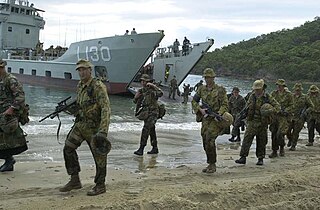
The Royal Australian Navy and Australian Army have operated 24 amphibious warfare ships. These ships have been used to transport Army units and supplies during exercises and operational deployments.
The Australian Defence Force Investigative Service (ADFIS) is the body responsible for complex and major investigations involving the Australian Defence Force. The ADFIS conducts investigations of serious incidents and breaches of the Defence Force Discipline Act involving persons subject to DFDA jurisdiction. The ADFIS is a 'tri-service' unit and is manned by 150 members of the Royal Australian Navy, Australian Army and Royal Australian Air Force. It was established in 2007 and is headquartered in Canberra.
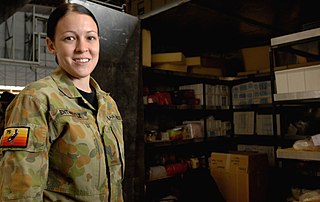
Women have served in Australian armed forces since 1899. Until World War II women were restricted to the Australian Army Nursing Service. This role expanded in 1941–42 when the Royal Australian Navy (RAN), Australian Army and Royal Australian Air Force established female branches in which women took on a range of support roles. While these organisations were disbanded at the end of the war, they were reestablished in 1950 as part of the military's permanent structure. Women were integrated into the services during the late 1970s and early 1980s and can now serve in most positions in the Australian Defence Force (ADF), including combat roles.

The 2nd Commando Regiment is a special forces unit of the Australian Army, and is part of Special Operations Command. The regiment was established on 19 June 2009 when the 4th Battalion, Royal Australian Regiment (Commando) was renamed. It is based at Holsworthy, New South Wales. The 2nd Commando Regiment often trains and deploys with the Special Air Service Regiment, is highly regarded by coalition special operation forces abroad, and has been involved in operations in East Timor, Iraq and Afghanistan, where it was used in a direct action warfighting role. It has also been involved in a number of domestic security operations including the 2006 Commonwealth Games and the 2014 G20 Leaders Summit.

The CatholicMilitary Ordinariate of Australia, is a Latin Church suffragan military ordinariate of the Roman Catholic Church immediately subject to the Holy See. It was established in 1969 and managed for administrative purposes by the Archdiocese of Sydney.

The Australian Operational Service Medal is a campaign medal established on 22 May 2012 to recognise service by Australian Defence Force (ADF) personnel on designated hazardous operations. It may also be awarded to civilians who serve alongside the ADF on designated operations under specific conditions.
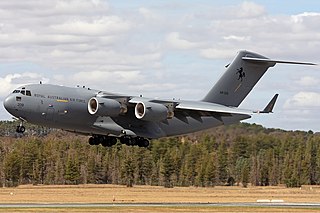
The Royal Australian Air Force (RAAF) operates eight Boeing C-17 Globemaster III large transport aircraft. Four C-17s were ordered in mid-2006 to improve the ability of the Australian Defence Force (ADF) to operate outside Australia and its region. The aircraft entered service between November 2006 and January 2008, the second pair being delivered ahead of schedule. Two more Globemasters were ordered in 2011, the sixth being delivered to the RAAF in November 2012. Another two C-17s were ordered in October 2014, with the final aircraft being delivered in November 2015. The Globemasters are built to the same specifications as those operated by the United States Air Force (USAF), and the Australian aircraft are maintained through an international contract with Boeing.

Major General Simone Louise Wilkie, is an Australian Army officer who was the Australian Deputy National Commander in the War in Afghanistan in 2011 and 2012. She was Assistant Chief of Staff to General David Petraeus during the Iraq War troop surge of 2007, and was the first female Commanding Officer of the Royal Military College, Duntroon and Commandant at the Army Recruit Training Centre at Kapooka. In March 2013 the Minister for Defence, Stephen Smith, announced her promotion to major general to take over as Commander of the Australian Defence College in July 2013.


